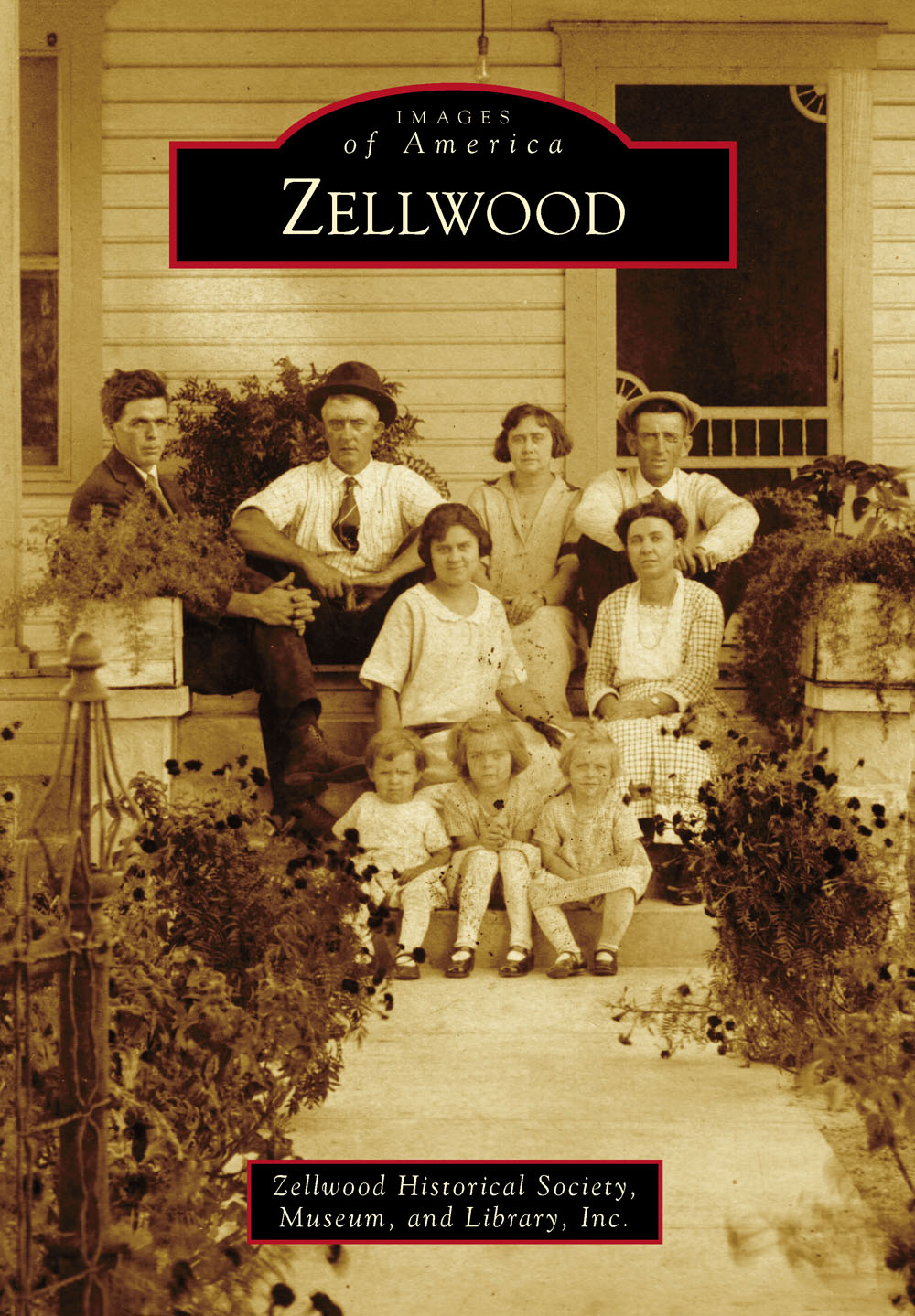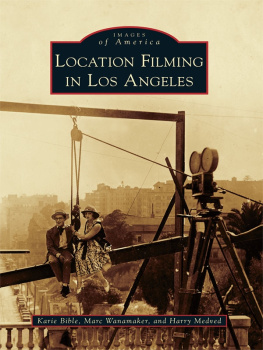
IMAGES
of America
ZELLWOOD

This 1884 map of Zellwood shows sections of land owned by Thomas Zell, Richard Robinson, and Daniel Fleming, as well as other owners listed in Zells scrapbook. Flemings land contained the depot, businesses, homes, Taylors planing mill, Mrs. Dunns boardinghouse, Mitchells boardinghouse, H.H. Ashmans store, and the office of local physician Dr. Charles Lanphear. The areas owned by Robinson and J.T. Pickett contained residences and groves. (Courtesy of John Maseman.)
ON THE COVER: Around, 1921, Thomas Edward Newton purchased property diagonally across from the Zellwood Inn, and by 1924, he had built this home. Pictured here are, from left to right, (first row) Bernice, Gertrude, and Ruth Wilkins; (second row) Velma Newton and her mother, Rachel Newton; (third row) Bernard D. Wilkins, Thomas (Rachels husband), Elsie Pearl Newton Wilkins, and George Newton (brother of Elsie and son of Thomas and Rachel). (Courtesy of the Wilkins family.)
IMAGES
of America
ZELLWOOD
Zellwood Historical Society,
Museum, and Library, Inc.

Copyright 2014 by Zellwood Historical Society, Museum, and Library, Inc.
ISBN 978-1-4671-1231-4
Ebook ISBN 9781439648407
Published by Arcadia Publishing
Charleston, South Carolina
Library of Congress Control Number: 2014931059
For all general information, please contact Arcadia Publishing:
Telephone 843-853-2070
Fax 843-853-0044
E-mail
For customer service and orders:
Toll-Free 1-888-313-2665
Visit us on the Internet at www.arcadiapublishing.com
To the many unique individuals who settled in and founded Zellwoodland speculators, hunters, fishermen, farmers, citrus growers, nurserymen, shopkeepers, businessmen, laborers, and all other Zellwoodians.
CONTENTS
ACKNOWLEDGMENTS
This book was inspired by Charles E. Grinnell Sr., a Zellwood farmer. We are grateful to the Zellwood Historical Society and the friends of Zellwood who provided photographs and information to complete this project. The Zellwood Historical Society would like to thank Marjorie Grinnell, Jack Humphrey, Deloris Brown Lynch, Rosa Lee Ondich, Denny Shiver, and Cicily Vincent Turner for their work on this book. Liz Gurley, of Arcadia Publishing, encouraged and guided us. William Lovelady, of D&L Publishing Group, and Nicole Lovelady provided technical and editorial assistance. Our friends at the Museum of the Apopkans have supported us throughout the process. Zellwood Community Center provided workspace. George Kluhsmeier helped establish the Zellwood Historical Society, which yielded archival records and photographs. The Leon and Violet Osborn collection (OC) was a source of images and unpublished information. The invaluable publications we consulted include the following: The Apopka Chief; History of Apopka and Northwest Orange County Florida, by Jerrell H. Shofner; and Countdown for Agriculture in Orange County, Florida, by Henry F. Swanson.
All images appear courtesy of the Zellwood Historical Society, Museum, and Library unless otherwise noted. For providing additional images for this book, we thank the Lovelady family (WL), Janice Fly Blackwelder (JFB) (for the King and Fly family photographs), the Charles Grinnell Sr. family (CG); and Cicily Vincent Turner (CVT).
INTRODUCTION
No soul remembered is ever really gone or forgotten.
Via these pages, the Zellwood Historical Society, Museum, and Library remembers Zellwoods beginnings, its people, and its events.
A traveler, lulled by the monotonous clip-clip-clip of the highway as he zips along Orange Blossom Trail from Orlando to Mount Dora, might not realize he has passed the Conquest Cemetery or the Laughlin historic district, or driven within two miles of Sydonie, one of Orange Countys historic buildings. Who would guess that one mile south, there were once muck farms that helped feed the nation? Or that Native Americans left dugouts and arrowheads on the north shore of Lake Apopka? Do the motorcyclists who park by the two-story wooden building realize that it was once a trading postthat it is one of the oldest commercial establishments in Orange County?
Travel with us down memory lane.
William Carter Goolsby migrated to the Zellwood area around 1850. With the help of slaves, he cleared land, planted citrus groves, and constructed buildings along the edge of Lake Apopka in Grassmere, which is now the area known as McDonald. In nearby Conquest Cemetery are the Goolsby familys headstones, among others, and unmarked burial sites of slaves. The Goolsby and Wilkins families built Conquest Methodist Church near the cemetery.
With the development of the railroad in the late 1880s, more people arrived in Zellwood. The Vincent, Vine, and Morton families, along with a cattle car hired by the group of families, arrived from Texas via train in 1911. Supplies came in; citrus and vegetables were shipped out. Telegraph service was available, and trains brought word of weather from the north.
The early settlers found this area to be beautiful with its lush growths of oak and pine trees and palmetto and sable palmsall covered with vines and moss. Wild blackberries and huckleberries were plentiful, providing pioneer women with ingredients for jellies, jams, and pies. Adjusting to their new lives may have been hard for these refined ladies, who relocated to Zellwood from the north to live in somewhat primitive conditions while waiting for their homes to be built. The earliest pioneers did their cooking outside on an open fire.
Settlers around Lakes Maggiore and Minore included publishers, doctors, lawyers, judges, real-estate salesmen, and retired military officers. These were intellectual, cultured, well-read, and successful people. Housing was needed, so families accepted boarders and built inns. Homesteaders constructed houses from trees found on their land. Over time, Zellwoodians built homes from available resources, including disassembled buildings. Inexpensive shelterincluding Army barracks and Wilson Cypress Lumber Company camp houseswas relocated to Zellwood. Socioeconomic groups ranging from extremely wealthy folks to farm laborers made their homes in Zellwood.
Some early citizens were attracted to Zellwood because the climate was ideal for growing citrus, peaches, and pineapples. These endeavors were successful until the big freezes of 1884 and 1885. During one of the freezes, Richard Robinson attempted to save his citrus trees by burning the fence surrounding his grove.
An influx of people during the 1940s caused a growth spurt in Zellwoods population. During this time, the Sewells, Barretts, Smiths, Bryants, Millers, Humphreys, Browns, Willifords, Grinnells, and Shivers came to Zellwood to start businesses or find work. Many migrated from Georgia and found employment in the citrus and farming industries. Some over those who arrived in the 1940s may remember waking up to the hum of crop-dusting airplanes flying over the farmland, smelling the fragrance of orange blossoms in the air, and picking fresh oranges to eat.
On summer afternoons, families went for a swim in nearby Lake Ola or Rock Springs. A trip to the Sanford Zoo was a huge event in a childs life. Daytona Beach beckoned people to drive over and enjoy the sun and surf. Teenagers traveled to Daytona early on Saturday mornings and parked in front of the boardwalk to hear the hit songs of the day coming from the loudspeaker.
Next page
















